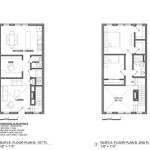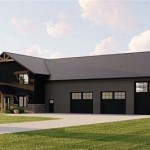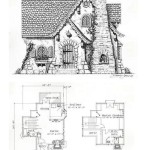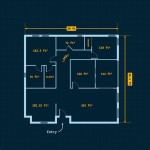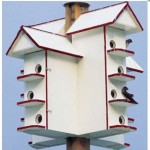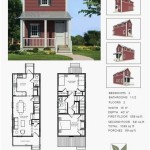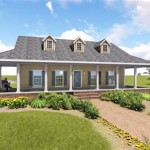Build Bluebird House Plans: A Comprehensive Guide
Attracting bluebirds to residential properties offers aesthetic enjoyment and ecological benefits. These birds are known for their vibrant plumage and insectivorous diet, which aids in controlling garden pests. Providing suitable nesting sites is crucial for supporting bluebird populations, particularly in areas where natural cavities are scarce. Constructing a bluebird house according to proven plans improves the likelihood of successful nesting and fledging.
The selection of appropriate build bluebird house plans is a vital first step. Many designs are available, each with varying dimensions, features, and suitability for different environments. Plans should prioritize the safety and comfort of the bluebirds, incorporating features that deter predators and provide adequate ventilation and drainage. This article delves into the essential considerations for selecting and implementing effective build bluebird house plans.
Key Considerations in Bluebird House Design
Several factors influence the success of a bluebird house. These factors relate to the overall design, materials used, and placement of the house. Neglecting these aspects can result in an unattractive or even dangerous habitat for bluebirds, potentially jeopardizing nesting attempts.
The size of the entrance hole is perhaps the most critical design element. A 1.5-inch diameter hole is generally recommended for Eastern, Western, and Mountain Bluebirds. This size effectively excludes larger birds, such as starlings, which compete with bluebirds for nesting sites and may even harm bluebird nestlings. An entrance hole slightly smaller than 1.5 inches can be used to discourage house sparrows in specific locations. However, it is important to ensure that the selected size doesn’t prevent bluebirds from entering.
The dimensions of the floor and depth of the box are also important. A floor size of approximately 5x5 inches provides sufficient space for a bluebird family. The depth, measured from the entrance hole to the floor, should be between 6 and 8 inches. This depth helps protect the nest from rain and wind and makes it more difficult for predators to reach the nestlings. Deeper boxes can be especially beneficial in areas with greater predator pressure.
Ventilation and drainage are essential for maintaining a healthy environment inside the bluebird house. Ventilation holes, typically drilled near the top of the box, allow for air circulation, which helps to regulate temperature and reduce moisture buildup. Drainage holes, located in the floor, prevent water from accumulating inside the box. Proper ventilation and drainage minimize the risk of mold growth and overheating, both of which can be detrimental to bluebird nestlings.
The absence of a perch below the entrance hole is a crucial design feature. Perches provide leverage for predators like house sparrows, making it easier for them to access the nest. Bluebirds do not require a perch to enter the house; they are adept at flying directly into the entrance hole. Removing the perch is a simple yet effective way to deter unwanted species.
Construction materials greatly influence the durability and thermal properties of the bluebird house. Untreated wood, such as cedar, redwood, or pine, is preferred. These materials are naturally resistant to decay and do not require chemical treatments that could be harmful to bluebirds. Plywood can be used, but it should be exterior-grade and preferably marine-grade to withstand exposure to the elements. Avoid using treated lumber, as the chemicals used in the treatment process can be toxic to birds.
The design should incorporate a hinged roof or side panel for easy monitoring and cleaning. Bluebird houses should be cleaned out annually after the nesting season to remove old nests and parasites. A hinged design allows for convenient access to the inside of the box without requiring the removal of the entire structure. Secure the hinged panel with screws or latches to prevent it from accidentally opening during inclement weather.
Implementing Build Bluebird House Plans
Once suitable build bluebird house plans have been selected, the construction process can begin. Careful adherence to the plans and attention to detail are crucial for ensuring a functional and safe nesting environment. The following steps outline the key aspects of implementation.
The first step involves gathering the necessary materials and tools. As mentioned previously, choose untreated wood that is resistant to decay. The plans will specify the dimensions and quantities of each piece of wood required. In addition to the wood, gather screws, nails, hinges, and any other hardware specified in the plans. Common tools required for building a bluebird house include a saw, drill, screwdriver, hammer, measuring tape, pencil, and safety glasses.
Cut the wood pieces according to the dimensions provided in the build bluebird house plans. Accuracy in cutting is essential for ensuring that the pieces fit together properly. A power saw can be used for larger pieces, while a hand saw may be more suitable for smaller or angled cuts. After cutting, sand any rough edges to prevent splinters and ensure a smooth surface.
Assemble the bluebird house according to the instructions in the plans. Typically, the sides, bottom, and front of the box are assembled first. Use screws or nails to securely fasten the pieces together. Screws are generally preferred, as they provide a stronger and more durable connection. Ensure that all joints are tight and that the box is square. Use a carpenter’s square to check the angles and make any necessary adjustments.
Drill the entrance hole at the specified height, typically 6 to 8 inches above the floor of the box. Use a hole saw of the correct diameter (1.5 inches) to create a clean, round hole. Avoid creating any jagged edges or splinters around the entrance hole. The plans should provide precise measurements for the placement of the entrance hole.
Install the ventilation and drainage holes. Ventilation holes are typically drilled near the top of the sides or front of the box. Use a small drill bit to create several small holes, ensuring that they are evenly spaced. Drainage holes are drilled in the floor of the box. Typically, two or three small holes are sufficient for adequate drainage. Positioning these holes toward the corners of the house can improve drainage efficiency.
Attach the hinged roof or side panel. The hinge should be durable and resistant to rust. Ensure that the panel opens and closes smoothly and that it can be securely fastened in the closed position. Use screws or latches to secure the panel. A tight seal is important to prevent rain and wind from entering the box.
Once the bluebird house is assembled, consider applying a light-colored, non-toxic stain or paint to the exterior. Light colors help to reflect sunlight and keep the box cool during hot weather. Avoid using dark colors, as they can absorb heat and make the box too hot for nestlings. Ensure that the stain or paint is completely dry before installing the bluebird house.
Placement and Maintenance of Bluebird Houses
The location of the bluebird house is critical for attracting bluebirds and ensuring successful nesting. Placement should consider factors such as habitat, predator pressure, and competition from other birds. Regular maintenance is also essential for maintaining a healthy and safe nesting environment.
Bluebirds prefer open habitat with scattered trees and shrubs. Ideal locations for bluebird houses include fields, pastures, orchards, and suburban yards with large, open areas. Avoid placing bluebird houses in dense woodlands or areas with heavy undergrowth. Bluebirds need open space for foraging and flying.
Mount the bluebird house on a pole or post at a height of approximately 5 to 10 feet above the ground. A metal pole or post is preferred, as it is less susceptible to damage from squirrels and other rodents. A predator guard, such as a baffle, should be installed below the bluebird house to prevent predators from climbing the pole or post. Baffles effectively deter snakes, raccoons, and other animals that prey on bluebird nests.
Orient the entrance hole away from prevailing winds and direct sunlight. In most areas, facing the entrance hole east or southeast is ideal. This orientation provides protection from harsh weather and prevents the box from overheating. Consider the surrounding landscape when determining the optimal orientation. Avoid facing the entrance hole towards areas with dense vegetation, as this can attract unwanted predators.
Monitor the bluebird house regularly during the nesting season. Check for signs of activity, such as bluebirds entering and exiting the box. Observe the nest building process and the development of the nestlings. Regular monitoring allows for the early detection of problems, such as predator attacks or nest box occupancy from competing species.
Clean the bluebird house annually after the nesting season has ended. Remove the old nest and any debris from inside the box. This helps to prevent the buildup of parasites and diseases. Disinfect the box with a mild bleach solution (1 part bleach to 9 parts water) to kill any remaining parasites. Allow the box to dry completely before reassembling it. This cleaning process supports a healthy environment for the bluebirds as they return for subsequent nesting seasons.
Repair any damage to the bluebird house promptly. Check for cracks, leaks, or loose components. Replace or repair damaged parts as needed. Regular maintenance ensures that the bluebird house remains safe and functional for many years. A well-maintained bluebird house increases the likelihood of successful nesting and contributes to the conservation of bluebird populations.

Bluebird Birdhouse Plans Complete Step By Instructions For Building A Bird House

Going To Be Building Several Bluebird Nesting Boxes Help Keep The Bugs Out Of My Garden Bird House Plans

Eastern Bluebird Birdhouse 70birds Plans Index

Bluebird House Plans Free Construct101

How To Make A Home For Blue Birds Of Maryland Http Www Dnr State Md Us Wildlife Habitat Wildacres Bird House Kits Bluebird Plans Free

Bluebird Birdhouse Plans Complete Step By Instructions For Building A Bird House

Creating Bluebird Habitat Free House Plans

Plans Birdhouse For Bluebirds Grinder Jig Bird House Free Bluebird

Build A Bluebird House In An Afternoon Diy Family Handyman

Western And Mountain Bluebird Birdhouse 70birds Plans Index
Related Posts


